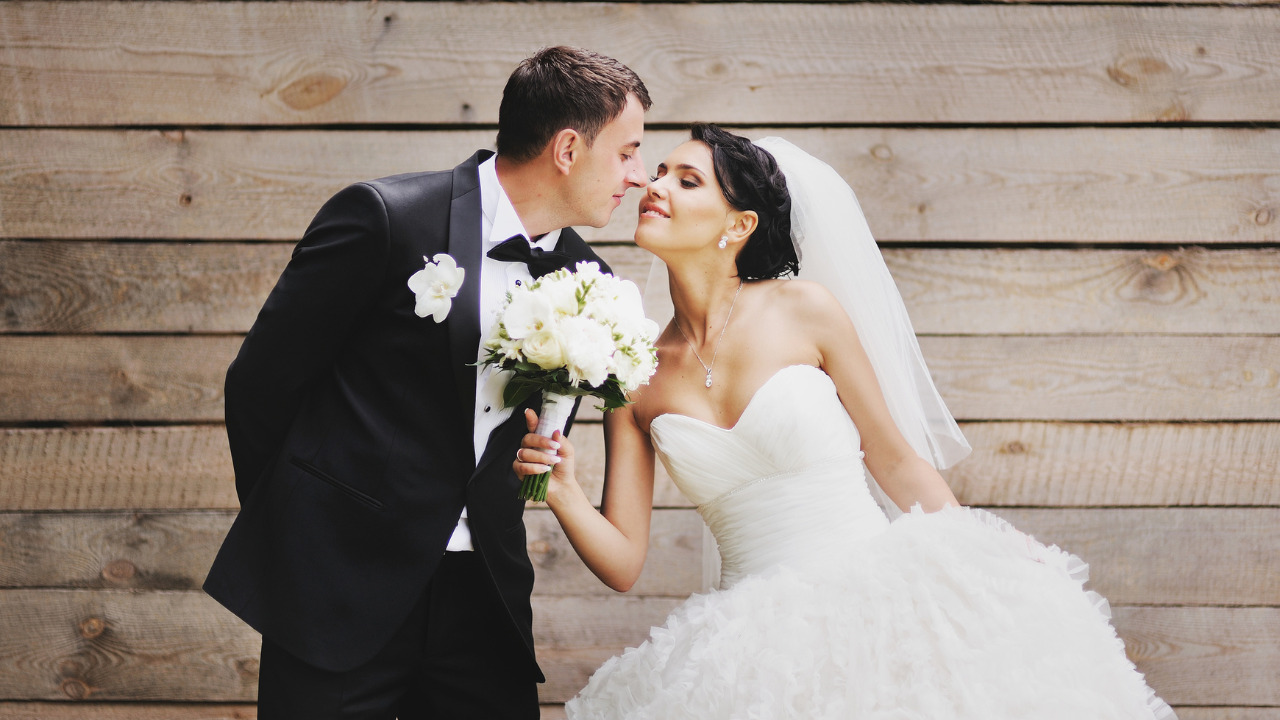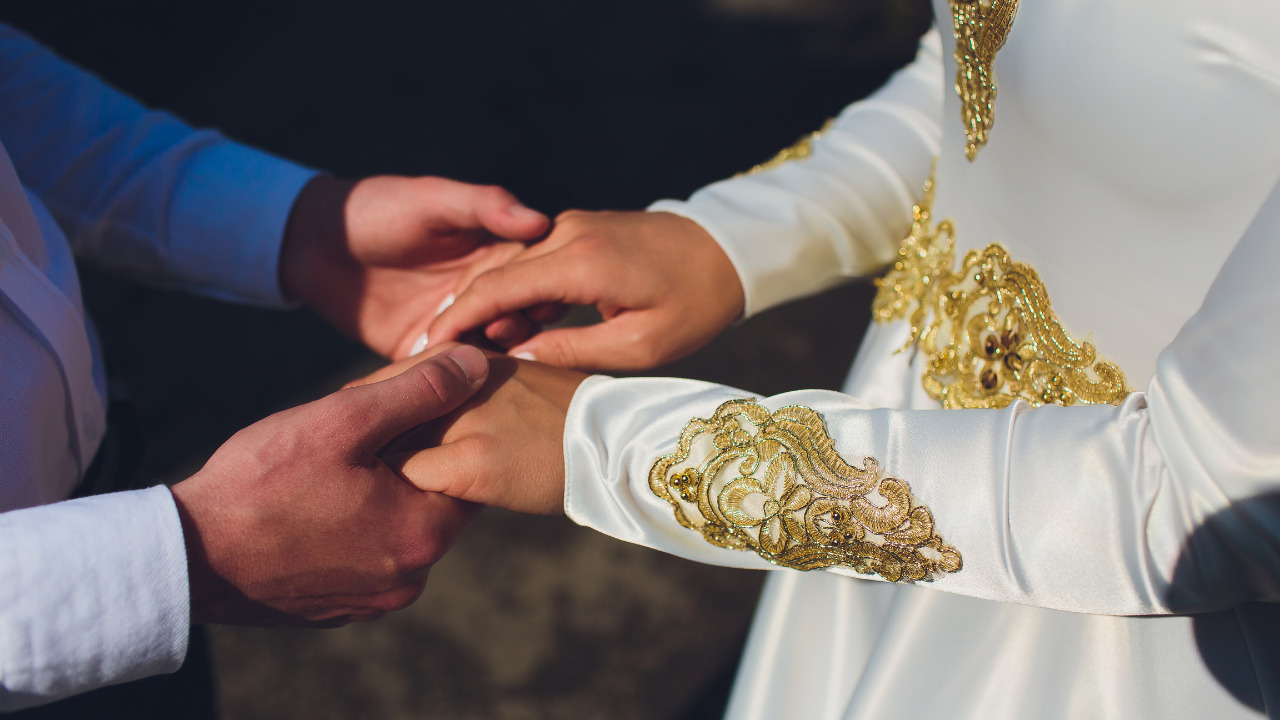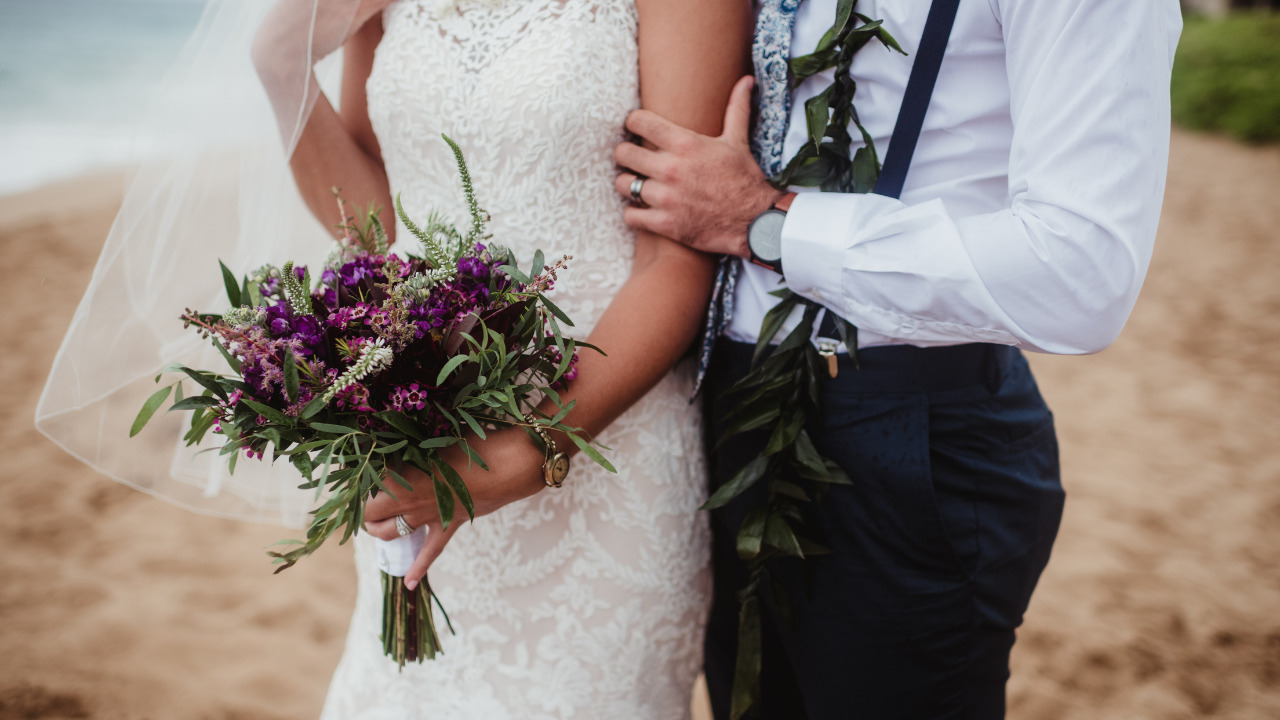After making your guest list and crafting a reception seating chart, don’t forget to think about mapping out a ceremony seating plan. You might be wondering exactly how to seat your family, extended family, wedding party and more. While your ceremony shouldn’t require rigidly assigned seats, there are a few traditional guidelines to help you place important people in the right spots. But when it comes to ceremony seating, as long as you don’t snub anyone (like accidentally forcing your 85-year-old grandparents behind a pillar so they can’t see a thing), feel free to shake things up and let people sit wherever they’d like. Here’s a traditional ceremony seating guide to get you started.
Who Should Sit on Which Side of the Aisle?
In traditional Christian ceremonies, the bride’s side of the guest list sits to the left and the groom’s side sits on the right of the church (if you’re looking at the altar from the back of the church). For Jewish services, it’s the opposite. But should someone express a preference for one side or the other (many guests will say they are friends or relatives of both to-be-weds), they can be seated wherever they want to sit. If one side of the family has more guests than the other, the ushers (if you’re having them) can help seat people to even things out. Couples with no preference as to who sits on which side can toss tradition completely and let guests choose their spot on a first-come, first-serve basis.
7 Ceremony Seating Basics
1. Make sure elderly guests are seated near the front and guests in wheelchairs or on crutches have access to an end seat.
2. The first four or five rows may be reserved for immediate and extended family (like aunts, uncles, cousins and godparents) and other special guests (like the parents of a child attendant) by tying ribbons across those rows. Both wedding parties typically sit in the first row after processing down the aisle—if they’re not standing up at the altar with you.
3. Immediate family is seated just before the ceremony begins. Siblings (if they’re not in the wedding party) are seated before grandparents and great-grandparents. They sit either in the first row with parents or in the second row with grandparents.
4. If you have step-relatives, make sure the ushers know whom they are. Step-relatives should be escorted to their seats first—for example, step-grandparents precede birth grandparents. You may want to reserve a few extra rows directly behind immediate family for step-grandparents and stepsiblings (but don’t feel like you have to separate blood relations from step-relations if you’d like them intermixed).
5. If parents are divorced, seat the parent who primarily raised the bride or groom in the front row with their partner, and seat the other parent and their partner in the third row. Alternatively, birth parents may sit beside each other in the first row, or they may share the front row with stepparents. This is one discussion you’ll want to have well in advance of your wedding day. Bring it up early and talk candidly to avoid awkwardness or tension when the day arrives.
6. In Jewish ceremonies, all parents stand under the chuppah with the couple. In Christian ceremonies, the bride’s mother is always seated last and the groom’s mother is seated just before her. The seating of the bride’s mother usually signals the ceremony is about to begin.
7. Brothers of the couple usually seat their mothers, but the head usher can do it if the brothers are in the wedding party, or a brother can seat his mom and then take his place with the other groomsmen.
What’s the Deal With Ushers?
Unless you’re having a super-intimate ceremony, we recommend having about one usher to seat every 50 guests. While wedding ceremony ushers are often male relatives or wedding party members, you can definitely designate both male and female friends to this task. It’s nice to know there are people in charge of passing out programs, getting people to their seats as seamlessly as possible and keeping an eye out for sensitive seating issues (like keeping your two feuding uncles apart).
If you’re going the traditional route, have ushers escort female guests to their seats. The usher should offer his right arm to the woman and lead her down the aisle to her seat, while her date or partner follows. (With a group of women, the usher might offer his arm to the oldest woman.) But these days, especially for a more relaxed ceremony, it’s fine for ushers to simply greet guests at the door and lead them to their seats, saying, “Please follow me.”



